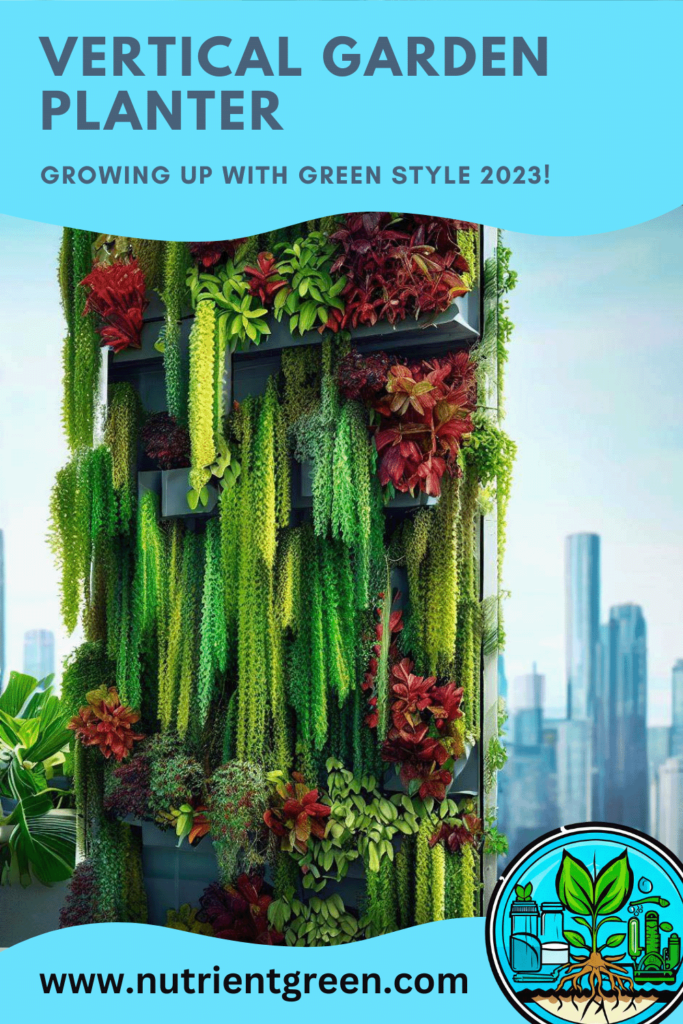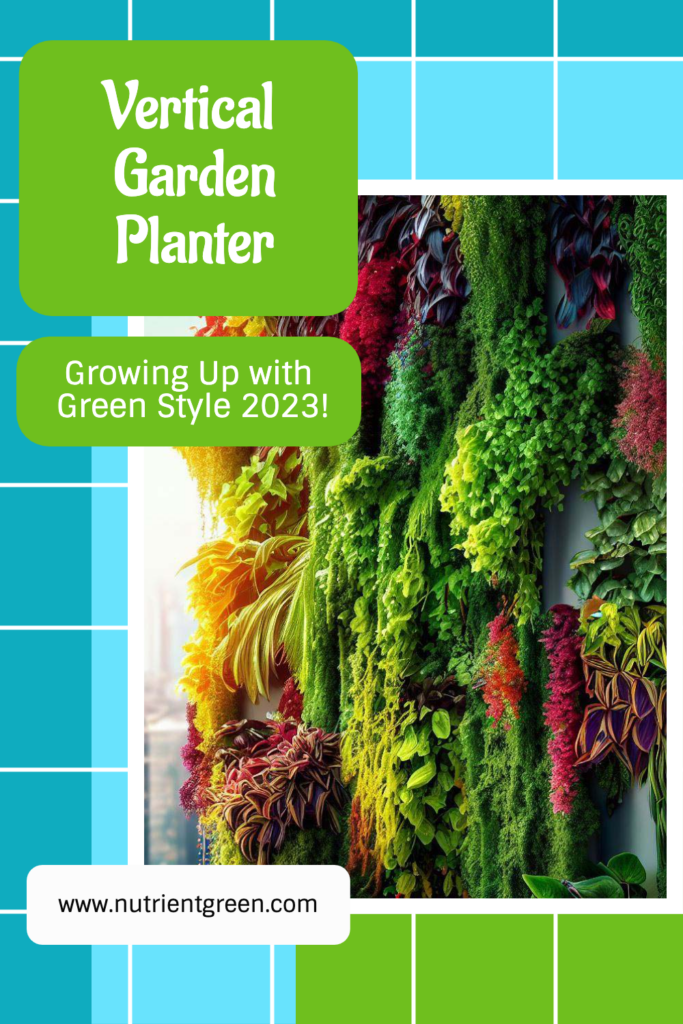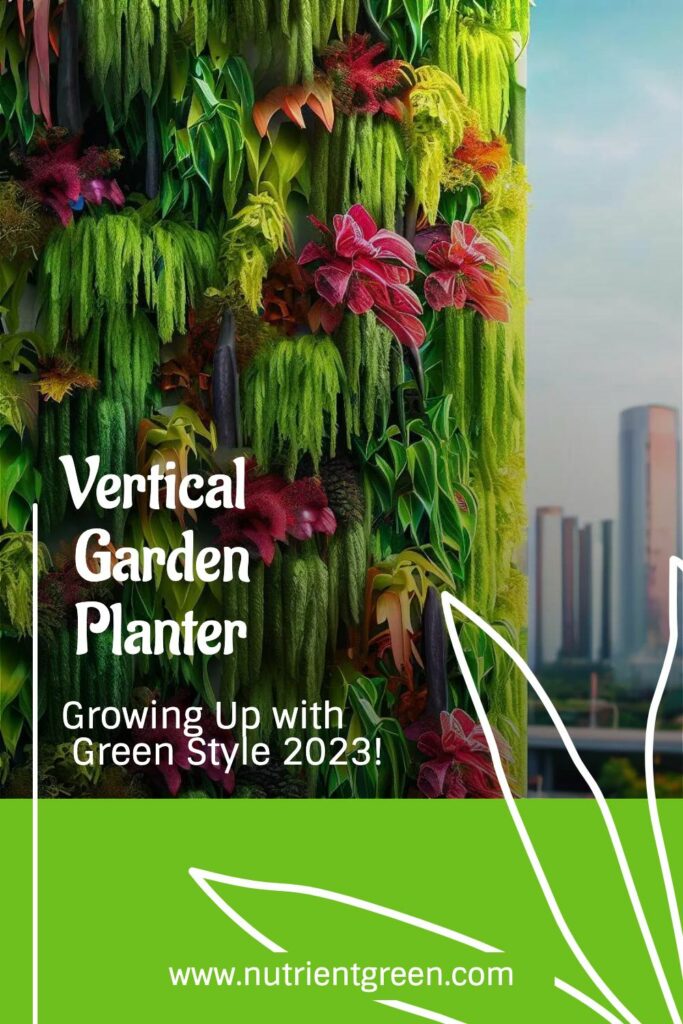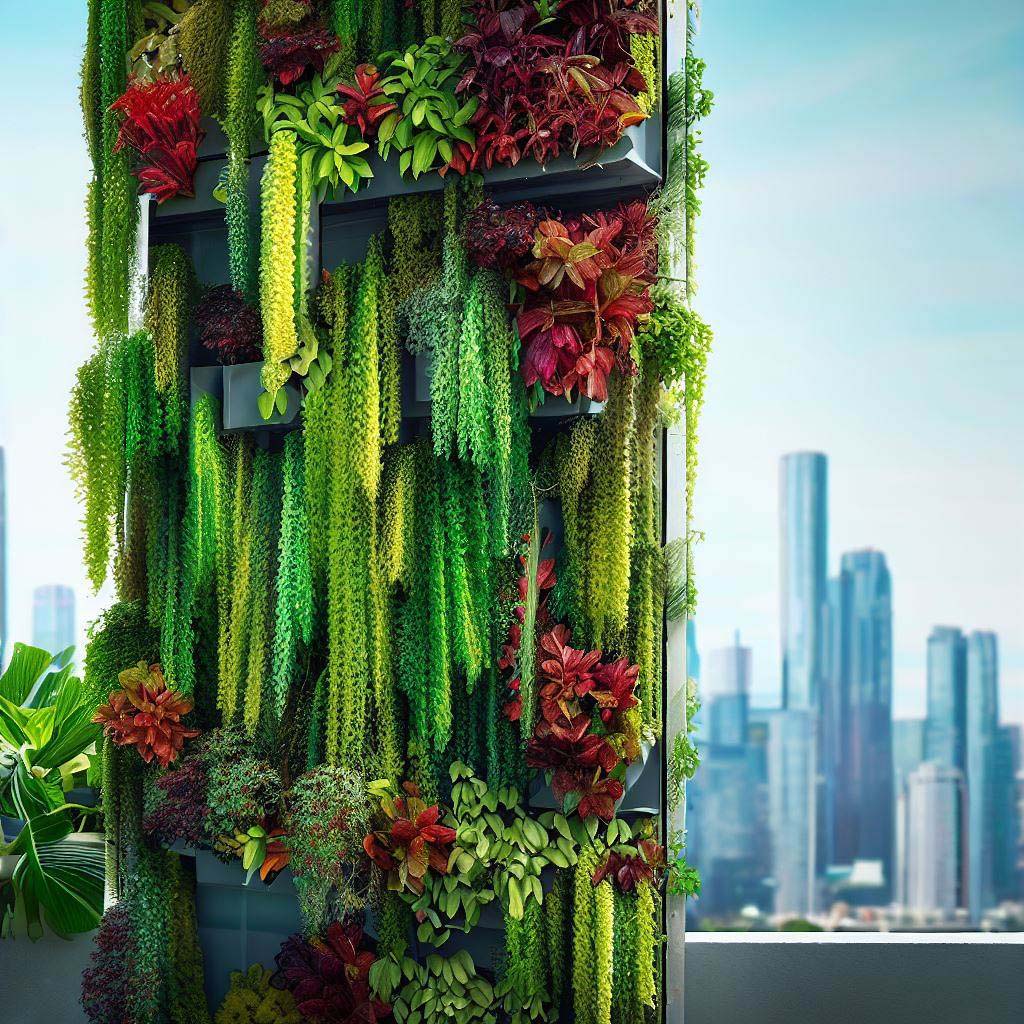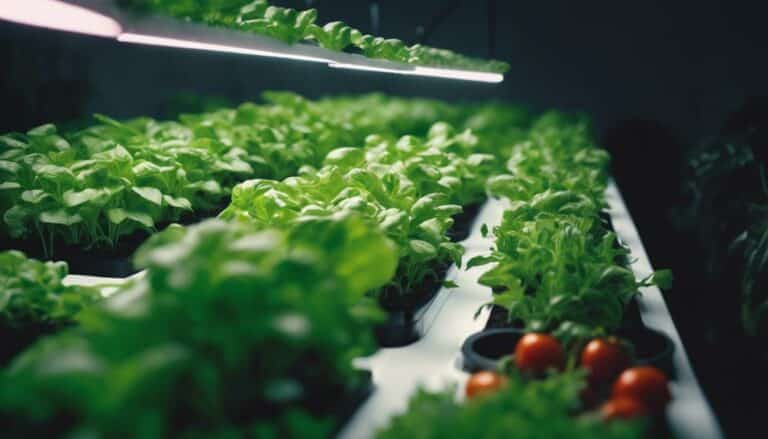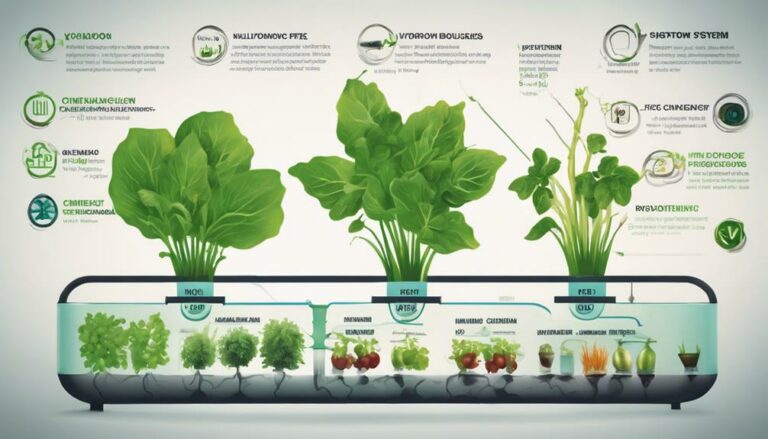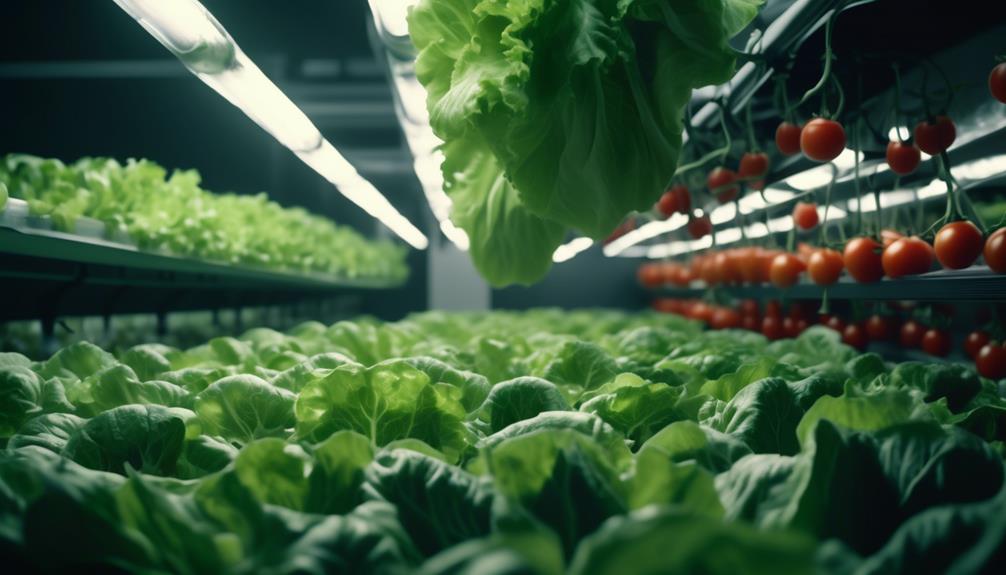Table of Contents
If you are looking for a way to grow your own plants at home without using soil, you might want to consider getting a vertical garden planter. These are innovative systems that allow you to grow plants vertically on a wall, a stand, or a pot, using water and nutrients instead of soil. In this article, I will share with you everything you need to know about vertical garden planters, from their benefits and types to their best plants and tips. As a hydroponics lover and a proud owner of a vertical garden planter myself, I hope to help you decide if this system is right for you.
The benefits of vertical garden planters
Vertical garden planters are not only fun and easy to use, but also have many advantages over traditional gardening methods. Here are some of the benefits that make vertical garden planters so popular:
Space-saving and versatile
One of the main reasons why people choose vertical garden planters is that they save a lot of space. You can grow more plants in less area by using the vertical dimension of your wall, balcony, patio, or window. You can also move your planter around easily if you need to change the location or orientation. Vertical garden planters are also very versatile, as you can customize them according to your preferences and needs. You can choose different sizes, shapes, colors, materials, and designs for your planter, as well as different types of plants.
Eco-friendly and sustainable
Another reason why people love vertical garden planters is that they are eco-friendly and sustainable. They use less water and energy than conventional gardening methods, as they recycle the water and nutrients through a closed-loop system. They also reduce waste and pollution, as they do not require soil, pesticides, or fertilizers. They also improve the air quality and temperature of your indoor or outdoor space, as they filter out toxins and produce oxygen.
Aesthetic and creative
A third reason why people enjoy vertical garden planters is that they are aesthetic and creative. They add beauty and charm to your home or office, as they create a living wall of greenery and color. They also allow you to express your personality and style, as you can arrange your plants in different patterns and themes. You can also experiment with different combinations of plants, textures, heights, and shapes.
The types of vertical garden planters
Vertical garden planters come in various types depending on how they are mounted or supported. There are two main categories of vertical garden planters: wall-mounted planters and freestanding planters.
Wall-mounted planters
Wall-mounted planters are attached to a wall or a fence using brackets, hooks, nails, or screws. They can be made of metal, wood, plastic, or fabric. They can also have different structures or systems to hold the plants. Here are some examples of wall-mounted planters:
Pockets and pouches
Pockets and pouches are fabric containers that have pockets or pouches to hold the plants. They are usually made of felt or canvas that is breathable and water-resistant. They are easy to install and maintain, as you can simply hang them on a wall or a fence. They are also lightweight and flexible, as you can fold them or cut them to fit your space. Pockets and pouches are ideal for growing herbs, greens, flowers, and succulents.
Frames and boxes
Frames and boxes are wooden or metal frames that have boxes or trays to hold the plants. They are usually made of cedar or pine that is durable and rot-resistant. They are more sturdy and stable than pockets and pouches, as they have a solid structure and support. They are also more decorative and elegant, as they have a refined and polished look. Frames and boxes are ideal for growing herbs, greens, flowers, and succulents.
Grids and panels
Grids and panels are metal or plastic grids or panels that have holes or slots to hold the plants. They are usually made of stainless steel or PVC that is rust-proof and UV-resistant. They are more durable and versatile than frames and boxes, as they can withstand harsh weather conditions and can be cut or shaped to fit your space. They are also more modern and sleek, as they have a minimalist and geometric look. Grids and panels are ideal for growing herbs, greens, flowers, and vines.
Freestanding planters
Freestanding planters are not attached to a wall or a fence, but stand on their own on a base or a stand. They can be made of metal, wood, plastic, or ceramic. They can also have different structures or systems to hold the plants. Here are some examples of freestanding planters:
Towers and columns
Towers and columns are vertical structures that have tiers or layers to hold the plants. They are usually made of metal or plastic that is sturdy and lightweight. They are easy to assemble and move, as they have a simple and modular design. They are also space-saving and productive, as they can grow more plants in less area. Towers and columns are ideal for growing herbs, greens, vegetables, and strawberries.
Ladders and shelves
Ladders and shelves are horizontal structures that have steps or shelves to hold the plants. They are usually made of wood or metal that is rustic and charming. They are easy to adjust and rearrange, as they have a flexible and adaptable design. They are also attractive and creative, as they can display your plants in different heights and angles. Ladders and shelves are ideal for growing herbs, greens, flowers, and succulents.
Pots and containers
Pots and containers are round or square structures that have pots or containers to hold the plants. They are usually made of ceramic or plastic that is colorful. They are easy to plant and replace, as they have a simple and modular design. They are also portable and flexible, as you can stack them or hang them in different ways. Pots and containers are ideal for growing herbs, greens, vegetables, and flowers.
The best plants for vertical garden planters
Vertical garden planters can grow a variety of plants, depending on the size, shape, and type of the planter. However, some plants are more suitable than others for vertical gardening, as they have certain characteristics that make them thrive in this system. Here are some of the best plants for vertical garden planters:
Herbs and greens
Herbs and greens are perfect for vertical garden planters, as they have small but strong root systems that do not need a lot of soil or space. They also have fast growth rates and high yields that make them ideal for harvesting frequently. They also add flavor and nutrition to your dishes and drinks.
Some of the best herbs and greens for vertical garden planters are:
- Basil: This is a popular herb that has a sweet and spicy flavor that goes well with many cuisines. It is easy to grow and maintain, as it likes warm and sunny conditions and regular watering. It also has many health benefits, such as anti-inflammatory and antioxidant properties.
- Parsley: This is a versatile herb that has a fresh and mild flavor that complements many dishes. It is easy to grow and maintain, as it likes cool and moist conditions and regular watering. It also has many health benefits, such as vitamin C and iron content.
- Chives: This is a perennial herb that has a mild onion-like flavor that adds a nice touch to salads, soups, and sauces. It is easy to grow and maintain, as it likes full sun or partial shade and moderate watering. It also has many health benefits, such as antibacterial and antifungal properties.
- Lettuce: This is a leafy green that has a crisp and refreshing texture that makes it a staple for salads and sandwiches. It is easy to grow and maintain, as it likes cool and moist conditions and regular watering. It also has many health benefits, such as vitamin A and K content.
- Spinach: This is a leafy green that has a tender and slightly bitter flavor that makes it great for salads, smoothies, and stir-fries. It is easy to grow and maintain, as it likes cool and moist conditions and regular watering. It also has many health benefits, such as iron and calcium content.
Succulents and cacti
Succulents and cacti are ideal for vertical garden planters, as they have thick and fleshy stems or leaves that store water and nutrients. They also have low maintenance requirements, as they can tolerate drought and neglect. They also add beauty and charm to your home or office, as they have unique shapes and colors. Some of the best succulents and cacti for vertical garden planters are:
- Echeveria: This is a popular succulent that has rosette-shaped leaves that come in various shades of green, pink, purple, or blue. It is easy to grow and maintain, as it likes full sun or bright light and occasional watering. It also produces lovely flowers in the spring or summer.
- Crassula: This is a diverse succulent that has fleshy leaves that come in various shapes and sizes. It is easy to grow and maintain, as it likes full sun or bright light and occasional watering. It also produces small white or pink flowers that add a touch of color.
- Sedum: This is a diverse succulent that has thick and fleshy leaves that come in various shapes and colors. It is easy to grow and maintain, as it likes full sun or partial shade and occasional watering. It also produces star-shaped flowers that attract butterflies and bees.
- Cactus: This is a spiny succulent that has cylindrical or spherical stems that store water and nutrients. It is easy to grow and maintain, as it likes full sun or bright light and rare watering. It also produces stunning flowers that contrast with its prickly appearance.
Flowers and vines
Flowers and vines are great for vertical garden planters, as they have long and trailing stems or leaves that create a cascading effect. They also have colorful and fragrant blooms that add beauty and aroma to your home or office. Some of the best flowers and vines for vertical garden planters are:
- Petunia: This is a popular flower that has trumpet-shaped petals that come in various colors and patterns. It is easy to grow and maintain, as it likes full sun or partial shade and regular watering. It also attracts hummingbirds and butterflies with its sweet scent.
- Begonia: This is a versatile flower that has waxy or hairy leaves that come in various shapes and colors. It is easy to grow and maintain, as it likes partial shade and moderate watering. It also produces clusters of flowers that range from white to red.
- Ivy: This is a classic vine that has evergreen leaves that come in various shapes and sizes. It is easy to grow and maintain, as it likes partial shade and moderate watering. It also creates a dense and lush cover that can hide any imperfections on your wall or fence.
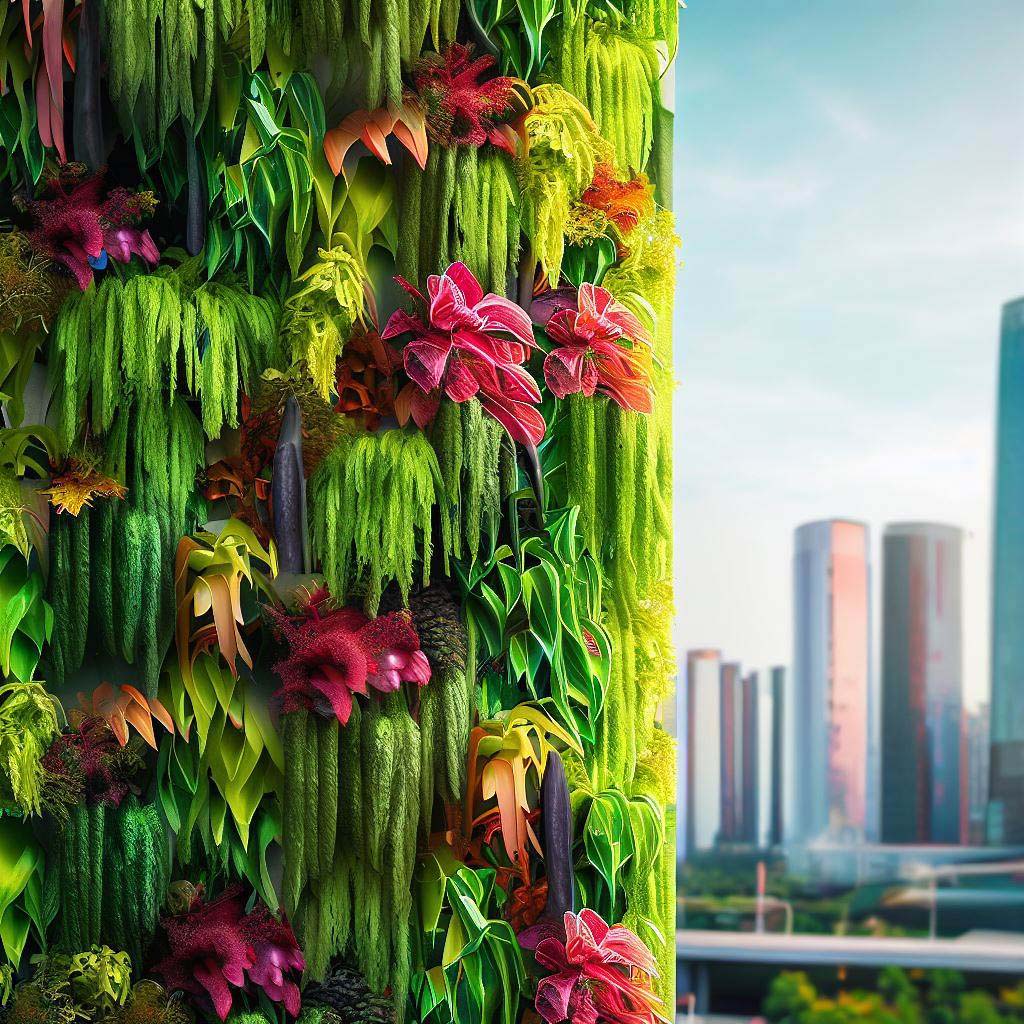
The tips for vertical garden planters
Vertical garden planters are not very difficult to set up and care for, but they do require some attention and maintenance to keep them healthy and happy. Here are some tips for vertical garden planters that will help you succeed:
Choose the right location and orientation
The location and orientation of your vertical garden planter will affect the amount of sunlight, wind, rain, and temperature that your plants will receive. You should choose a spot that matches the needs of your plants, as well as your own preferences. For example, if you want to grow herbs or vegetables, you should choose a south-facing wall that gets at least six hours of direct sunlight per day. If you want to grow succulents or cacti, you should choose a west-facing wall that gets afternoon sun but avoids the scorching midday heat. If you want to grow flowers or vines, you should choose an east-facing wall that gets morning sun but avoids the drying winds.
Provide adequate water and nutrients
The water and nutrient requirements of your plants will depend on the type of planter, the type of plants, the weather conditions, and the season. You should check your plants regularly for signs of overwatering or underwatering, such as wilting, yellowing, drooping, or rotting. You should also check the soil moisture by inserting your finger into the pot or using a moisture meter. You should water your plants when the top inch of soil feels dry, but avoid watering too much or too little. You should also feed your plants with a balanced fertilizer every two weeks during the growing season, but reduce or stop fertilizing during the dormant season.
Prune and harvest regularly
The pruning and harvesting requirements of your plants will depend on the type of plants, the growth rate, the desired shape, and the yield. You should prune your plants regularly to remove any dead, diseased, or damaged parts, as well as to control their size and shape. You should also harvest your plants regularly to encourage new growth and prevent them from becoming leggy or overcrowded. You should harvest your herbs or greens by pinching off the leaves from the top or the sides, leaving some leaves for regrowth. You should harvest your vegetables or fruits by cutting them off with a sharp knife or scissors when they are ripe or mature.
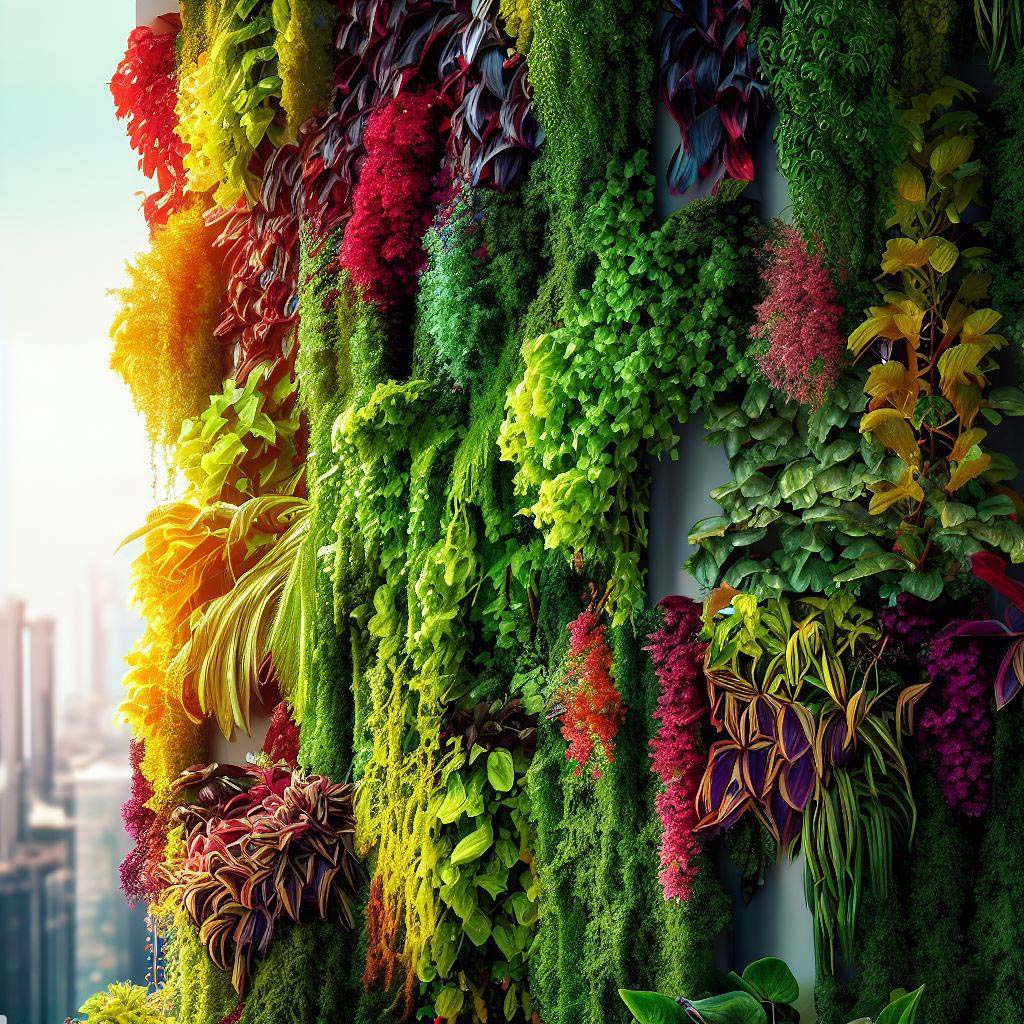
Conclusion: How to get started with vertical garden planters
Vertical garden planters are a wonderful way to grow your own plants at home without using soil. They are space-saving, eco-friendly, aesthetic, creative, fun, and easy to use. They can also provide you with fresh herbs, greens, vegetables, fruits, flowers, succulents, cacti, or vines for your enjoyment.
If you want to get started with vertical garden planters, you should first decide what type of planter you want, what type of plants you want, and where you want to place your planter. Then, you should gather the materials and tools you need, and follow the instructions to build or install your planter. After that, you should plant your plants, water and feed them, prune and harvest them, and enjoy your vertical garden!
FAQs
How do I water my vertical garden planter?
You can water your vertical garden planter by hand using a watering can or a hose, or by using a drip irrigation system that delivers water to each pot or pocket. You should water your plants when the soil feels dry to the touch, but avoid overwatering or underwatering them.
How do I fertilize my vertical garden planter?
You can fertilize your vertical garden planter by using a liquid or granular fertilizer that is suitable for your plants. You should follow the directions on the label and apply the fertilizer every two weeks during the growing season, but reduce or stop fertilizing during the dormant season.
How do I prevent pests and diseases in my vertical garden planter?
You can prevent pests and diseases in your vertical garden planter by choosing healthy and disease-resistant plants, inspecting them regularly for signs of infestation or infection, removing any affected parts or plants, and using organic or natural remedies to treat them.
How do I winterize my vertical garden planter?
You can winterize your vertical garden planter by moving it indoors if possible, or covering it with a frost cloth or a plastic sheet if not. You should also reduce or stop watering and fertilizing your plants, and prune them back to encourage new growth in the spring.
How do I add more plants to my vertical garden planter?
You can add more plants to your vertical garden planter by expanding your existing planter with more pots or pockets, or by adding a new planter next to or above your existing one. You should make sure that the new plants are compatible with the old ones in terms of sunlight, water, and nutrient needs.
